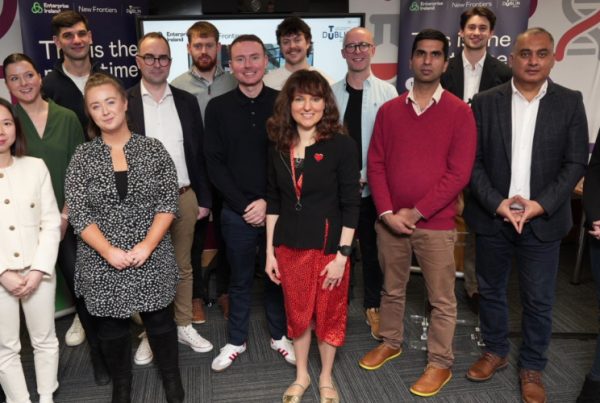
Most startup founders are familiar with the concept of idea validation. In fact, Phase 1 of New Frontiers is all about helping entrepreneurs to validate their startup idea and get them to a go/no-go decision. Idea validation can be summed up as finding out if people want what you are planning to build – i.e., if it’s a viable product/service that’s worth further investment.
But there’s another area of early-stage research that is too often forgotten or neglected by startup founders, and that’s what we want to look at today. Customer discovery provides a more in-depth understanding of the needs and preferences of potential customers, which helps inform product or service development. By conducting customer discovery, founders can ensure that their product or service idea is aligned with the needs of their target market, increasing the chances of success. Let’s look at what’s involved.
What is customer discovery?
Customer discovery is a process for understanding potential customers and the problems they are trying to solve. This involves conducting research and interviews with potential customers to gather information about their needs, pain points, and preferences. The goal of customer discovery is to validate the assumptions you are making about the target market, and to identify potential areas for change and improvement.
Customer discovery has many benefits for a business. The top ones are that it helps you to understand the needs and preferences of potential customers, uncover possible challenges and obstacles that may present themselves, and cement early relationships with potential customers who can help kickstart sales and marketing.
If you’re looking to develop your own discovery process, here are some steps you might start with:
- Define the problem or need you are trying to solve: Before starting, be clear about the problem or need that the startup is trying to address. This will help you focus your research and interviews on gathering information about the specific needs of your potential customers.
- Identify potential customers to interview: Identify people who are likely to have that problem or need. This can be done through, for example, research and networking.
- Conduct interviews with potential customers: These interviews can be in-person, over the phone, or through online surveys. During the interviews, you should ask questions about the potential customer’s needs, pain points, preferences, and other relevant information.
- Collate and analyse the data collected: Look for patterns and trends in the data and identify common themes and insights.
- Use the insights to inform development: This can involve making changes to the product, adjusting the business model, or developing a new marketing strategy. By incorporating the insights from customer discovery, you can better meet the needs of potential customers and improve its chances of success.
- Iterate and continue the process: Customer discovery is not a one-time process. As the startup continues to develop and grow, you should continue to conduct customer discovery to gather new insights and make ongoing improvements to your product or service.
Getting customer discovery right

Daniel Kyne at the Product Management Festival 2021
We spoke to Daniel Kyne, co-founder and CEO of OpinionX, a research tool that enables qualitative research at scale so that companies can find their product/market fit faster. Daniel is a New Frontiers alumnus and also trains New Frontiers cohorts to improve their own customer discovery processes. He is something of a nerd in the area of actionable user research strategies, so who better to bring the theory to life for us!
According to Daniel, one of the best places to start if you are new to this concept is The Mom Test by Rob Fitzpatrick. This book addresses a lot of the misconceptions people have about customer conversations. Typically, people think customer interviewing boils down to creating a giant PowerPoint, making people watch it, and then asking, “Would you like this product/service?” Research proves that, if you do this, you will tend to just get people agreeing with you (beware of flattery during this process!). Partly this is because people don’t want to hurt your feelings by saying, “This doesn’t seem like a good idea,” or, “I wouldn’t want this.”
The Mom Test takes you though some basic principles to avoid ending up in that situation. The key takeaways are that you should never use customer discovery interviews to tell people what your idea is or pitch them your product. Instead, you should focus on their lives and their problems – diving into the stories that give you all the context and details needed to really understand real-world examples of the problem. It’s also important that you don’t look at hypothetical scenarios, but actual examples of when the situation you are discussing happened.
As Daniel points out, customer discovery is the wider context of idea validation. It’s about finding the right combination of ingredients that can go together to build a successful business. Done right, it should answer questions like:
- Who the customer is
- What problem you are trying to solve
- How their life will be better once you solve that problem
As a concept, customer discovery really revolves around interviews. There are lots of great resources out there to help you get to grips with what good interviewing looks like, how to find people for interviewing, and most importantly what to ask/not ask. It’s a skill you can learn with just a little effort and practice.
Using customer discovery to prioritise problems
But uncovering problems isn’t the end of the process. It’s vital to understand how much of a priority the problem really is. This is an area of particular interest for Daniel, which he really started to investigate after seeing a tweet from Shreyas Doshi of Stripe, who was working directly with founders Patrick and John Collison.
Shreyas broke down the principles covered in The Mom Test, where founders or product managers try to use interviews to validate that the problem they are trying to solve exists. Described like this, it sounds like this is focusing on the right thing. But Shreyas showed that building a successful startup/product isn’t JUST about solving a problem for someone, you need to know that the problem is high up on their list too. If you are solving a problem that is only a mild inconvenience, people may not care enough about the solution!
Daniel says, “It’s not enough that you’re solving a problem. You want to be solving a ‘hair on fire’ kind of problem. This is the most missed element of idea validation. The way to do this is through what we call customer problem stack ranking, which is a survey technique to find out what really matters to people by getting them to prioritise problems. Once you know this, you are developing products/services with high impact that people will want.”
Getting started with customer discovery
How does Daniel suggest founders start discovering what people care about? It starts with asking yourself why this problem happens and what solutions people are using at the moment. For lots of founders on Phase 1 and even Phase 2 of New Frontiers, the challenge is to park their assumptions far off to one side, go back to the beginning, and re-validate everything they know. There’s a framework called the startup bow tie that you can use for doing this:
- Stage 1: persona (who is the customer), problem (what is the need), purpose (why does the problem need solving), product (the proposed MVP), positioning (understanding the context), and proposition (value proposition)
- Stage 2: pull
- Stage 3: model, medium, and market
Stages 1 and 2 of the bow tie framework are what happen before you gain traction. This is what occurs before you get the combination of ingredients that resonates with people and that people react to in a way that shows there is real need. At the early stages of the bow tie, a lot depends on your ability to interview well, because this is external information that you need to access. You can’t influence results much at this point, as you are still collecting data and insights. It’s at Stage 3 of the bow tie that you have the chance to turn insights into action and results. Daniel recommends checking out the breakdown of how this works in his article, Deconstructing WeatherBill’s $930M Startup Pivot.
As you can see, customer discovery is an essential part of any successful product or business strategy. By conducting interviews and surveys with potential customers, you will gather valuable perspectives that can help you create more effective products that are in tune with your customers’ needs and preferences. In addition, you’ll have an advantage when it comes to positioning your solution in the market and selling it to prospective clients!
Daniel Kyne is the Co-Founder and CEO of OpinionX, a research tool for ranking people’s priorities that’s used by thousands of teams at companies like Google, Amazon, and Shopify. Prior to OpinionX, Daniel was a Digital & Innovation Lead at Unilever UK, a Global Facilitator for Techstars Europe, Head of Speakers and Startups at Dublin Tech Summit, and a Global Shaper at the World Economic Forum. He writes about actionable user research strategies for product teams and startup founders on his newsletter The Full-Stack Researcher.
About the author

Scarlet Bierman
Scarlet Bierman is a content consultant, commissioned by Enterprise Ireland to fulfil the role of Editor of the New Frontiers website. She is an expert in designing and executing ethical marketing strategies and passionate about helping businesses to develop a quality online presence.
Recent articles

Founder Perspectives: Lessons From Building Businesses In Sustainability

Tech Startups In The Age Of AI: Alumnus Paul Savage On Speed, Quality & Risk

Fourteen Startup Founders Graduate From Phase 2 Of New Frontiers In Tallaght

Eleven Founders Graduate From New Frontiers In The Border Mid-East Region

Laying The Right Groundwork Helps Startups Prepare For Export Success

Startup In Dublin: Learn More About New Frontiers On TU Dublin’s Grangegorman Campus

Michael Furey On The Success Of Ronspot: “The Most Important Thing Is Research”


